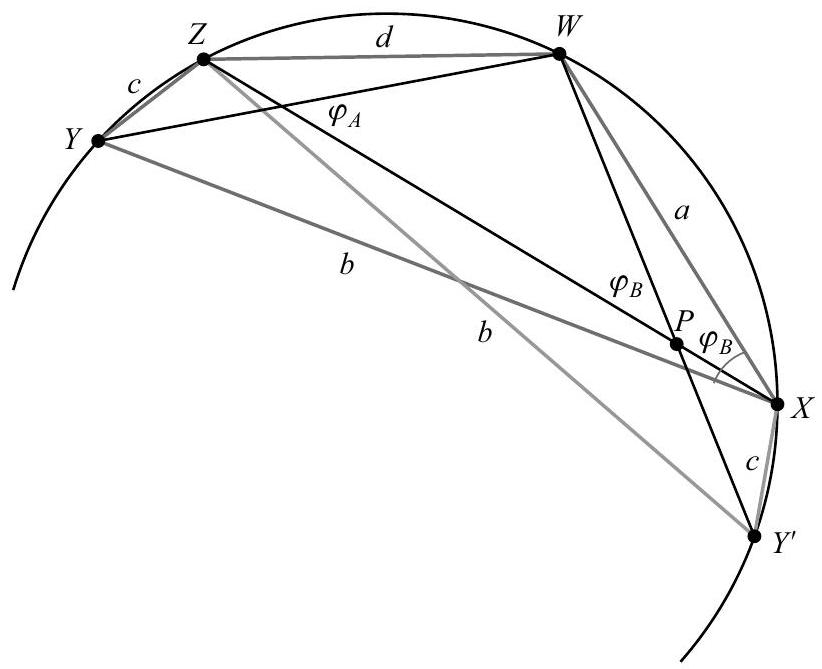Problem:
David found four sticks of different lengths that can be used to form three noncongruent convex cyclic quadrilaterals, , and , which can each be inscribed in a circle with radius . Let denote the measure of the acute angle made by the diagonals of quadrilateral , and define and similarly. Suppose that , and . All three quadrilaterals have the same area , which can be written in the form , where and are relatively prime positive integers. Find .
Solution:
Let the four sticks have lengths , and . By renaming the sides and considering reflections, it can be assumed without loss of generality that , quadrilateral has sides in that order, quadrilateral has sides , in that order, and quadrilateral has sides in that order.
Let denote quadrilateral with , and , shown in the figure below. Construct point on in the direction so that , and let be the intersection of and . Note that has side lengths , and in that order, so it is congruent to quadrilateral . Because is half the sum of the central angles of and , and is half the sum of the central angles of arcs and , it follows that . Because the angles , and have the same sines as their supplements, it does not matter whether these angles are acute or obtuse. Hence set
This means that an angle with measure can actually be found in an interior angle of quadrilateral . Similarly, .
Now by the Law of Sines,
This means that
But note that the requested area is . Therefore
The requested sum is .

Note that this result is actually a generalization of a similar result for triangles, namely that
where is the circumradius of the triangle.
This result also follows from the fact that the area of a triangle with sides , and and circumradius is . The specifications in the problem are satisfied if the lengths of the sticks are approximately , and .
The problems on this page are the property of the MAA's American Mathematics Competitions